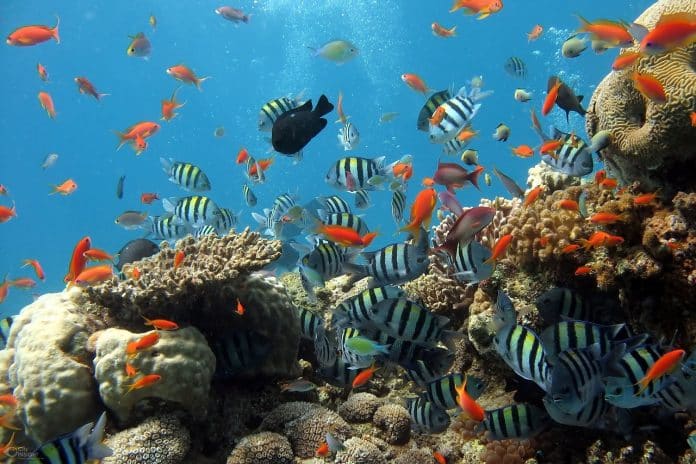The COPs are the most important annual climate conferences but this year’s 27th annual summit or COP27 is different from the previous ones.
It’s all about moving from mere negotiations and planning for the net zero pledges to implementing promises to protect forests and provide climate finance.
During the first three days, talks center on carbon credits and compensating developing nations for ‘losses and damages’ caused by climate change. The UN had also made clear its zero tolerance for greenwashing.
But there’s a lot more to expect and learn from COP27 and here are the four key takeaways.
#1. Emissions from fossil fuels are 3x higher than what producers claim.
Climate TRACE, an NGO tracking emissions, released a report at COP27 that analyzed 72,612 individual sources of CO2.
Their study revealed that fossil fuel emissions could be up to 3x higher than what oil and gas companies claim.
The authors found that half of the biggest polluters are oil and gas fields. They used satellite technology to detect unreported emissions such as methane leakage.
- The top sources of global emissions represent less than 1% of total facilities reported in Climate TRACE’s dataset. But they account for 14% of total emissions in 2021.
The Permian Basin, an oil and gas field in the USA, is the most polluting project in the world as per the report. It has emitted 471 million MT of CO2e in the last 20 years. A Russian oil and gas field, Urengoyskoye, came second, emitting 317 million MT of CO2e for the same period.
Understating emissions from fossil fuels by oil and gas firms is “greenwashing and cheating”, according to UN Secretary General António Guterres. He further remarked that:
“The climate crisis is in front of our eyes – but also hidden in plain sight. We have huge emissions gaps, finance gaps, adaptation gaps… But those gaps cannot be effectively addressed without plugging the data gaps. After all, it is impossible to effectively manage and control what we cannot measure.”
Al Gore, former US vice president and a founding member of Climate TRACE, also said at COP27 that:
“The climate crisis can, at times, feel like an intractable challenge – in large part because we’ve had a limited understanding of precisely where emissions are coming from.”
Gore further noted that accurate and detailed data on emissions sources help us prioritize efforts to reduce planet warming gasses significantly.
#2. Africa needs up to $41.6 trillion to tackle the climate crisis.
The COP27 summit has been dubbed as the “African COP”. What the African countries have to say takes center stage at the talks.
Africa is so vulnerable to climate change. NGOs in the continent said that staple crops and fish harvests will decline in the coming years. Plus, the 116 million people in Africa will experience issues with rising sea levels.
Investment opportunities are very important for the continent, especially when it comes to water, cooling, and coast protection, according to the International Finance Corporation analysis.
- In fact, the Minister of Environment for Egypt Yasmine Fouad told COP27 that Africa needs up to $41.6 trillion (€41.4 trillion) by 2030 to deal with the damaging effects of climate change.
She also added that funding was a key challenge but is a must to “bridge the gaps between the needs and climate funding” for African nations.
Unfortunately, the world’s richest nations failed to deliver their $100 billion funding per year pledge for developing countries. And while there have been hunches of support, African nations have yet to see if COP27 can help them find the right investors.
#3. Finance giants with net zero pledges still invest in firms causing deforestation.
Large banks and financiers form the Glasgow Financial Alliance for Net Zero (GFANZ). They pledged to hit net zero by 2050 before COP26 last year, knowing that protecting forests is vital to achieving it.
- To date, the alliance members achieved only a 3% cut in investments associated with deforestation.
But a report launched at COP27 summit by Global Witness found that the finance giants still invest around $8.5 billion in firms at risk of causing deforestation. The NGO stated that:
“A year on from COP26, GFANZ membership is at risk of becoming little more than a badge to be worn by banks and financiers, who continue to plough money into practices that are destroying our forests.”
The report found that GFANZ members have investments in agricultural businesses accused of deforestation. Examples include the Brazilian firm JBS where members of the group have acquired shares since COP26. Their investments in similar firms have also gone up.
So key leaders of the alliance such as Mark Carney, the former Bank of England Governor, urged members to end financing deforestation. They warned that “the world will not reach net zero by 2050 unless we halt and reverse deforestation within a decade”.
And in October GFANZ announced it was dropping out of the ‘Race to Net Zero’. That came after the UN-backed campaign upped its standards and threatened to kick out non-performers.
#4. U.S. Agency pledges $15 million to protect coral reefs.
Coral reefs have long drawn tourists to the Red Sea peninsula and the COP27 venue in Sharm El Sheikh. But these diverse marine ecosystems are more than just a backdrop to the climate summit. They are home to over a thousand various species of fish and corals.

Yet more importantly, Egypt’s coral reefs act as ‘coral refugia’ that can withstand the increasing impacts of climate change.
As such, they offer the global community the chance to protect marine ecosystems. And they also act as seed banks that can help restore degraded reefs.
Mindful of their global importance, the United States Agency for International Development (USAID) announced a major new fund to support this local ecosystem. At COP27 summit, USAID pledged $15 million to the Global Fund for Coral Reefs (GFCR).
- This funding from USAID makes the total money raised by the GFCR to protect reefs to $187 million.
There will be more ‘blue carbon financing’ announcements in the coming days at COP27 summit. They include financing mangroves and seagrass.

